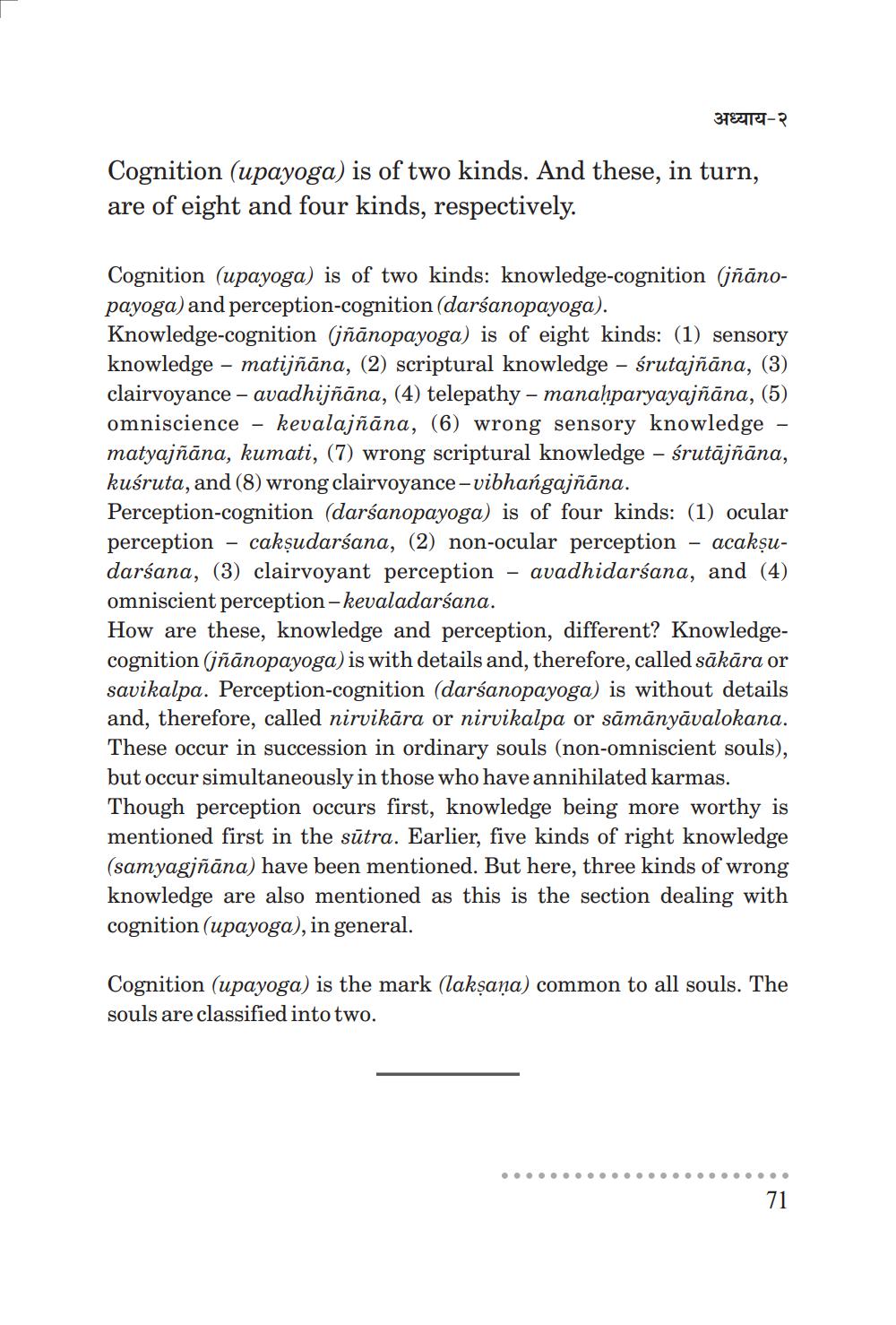________________
अध्याय-२
Cognition (upayoga) is of two kinds. And these, in turn, are of eight and four kinds, respectively.
Cognition (upayoga) is of two kinds: knowledge-cognition (jñānopayoga) and perception-cognition (darśanopayoga). Knowledge-cognition (jñānopayoga) is of eight kinds: (1) sensory knowledge - matijñāna, (2) scriptural knowledge – śrutajñāna, (3) clairvoyance - avadhijñāna, (4) telepathy - manaḥparyayajñāna, (5) omniscience - kevalajñāna, (6) wrong sensory knowledge – matyajñāna, kumati, (7) wrong scriptural knowledge – śrutājñāna, kuśruta, and (8) wrong clairvoyance-vibhangajñāna. Perception-cognition (darśanopayoga) is of four kinds: (1) ocular perception - cakşudarśana, (2) non-ocular perception - acakşudarśana, (3) clairvoyant perception - avadhidarśana, and (4) omniscient perception - kevaladarśana. How are these, knowledge and perception, different? Knowledgecognition (jñānopayoga) is with details and, therefore, called sākāra or savikalpa. Perception-cognition (darśanopayoga) is without details and, therefore, called nirvikāra or nirvikalpa or sāmānyāvalokana. These occur in succession in ordinary souls (non-omniscient souls), but occur simultaneously in those who have annihilated karmas. Though perception occurs first, knowledge being more worthy is mentioned first in the sūtra. Earlier, five kinds of right knowledge (samyagjñāna) have been mentioned. But here, three kinds of wrong knowledge are also mentioned as this is the section dealing with cognition (upayoga), in general.
Cognition (upayoga) is the mark (laksana) common to all souls. The souls are classified into two.
.
.
.
.
.
.
.
.
.
.
.
.
.
.
.
.
.
.
.
.
.
71




